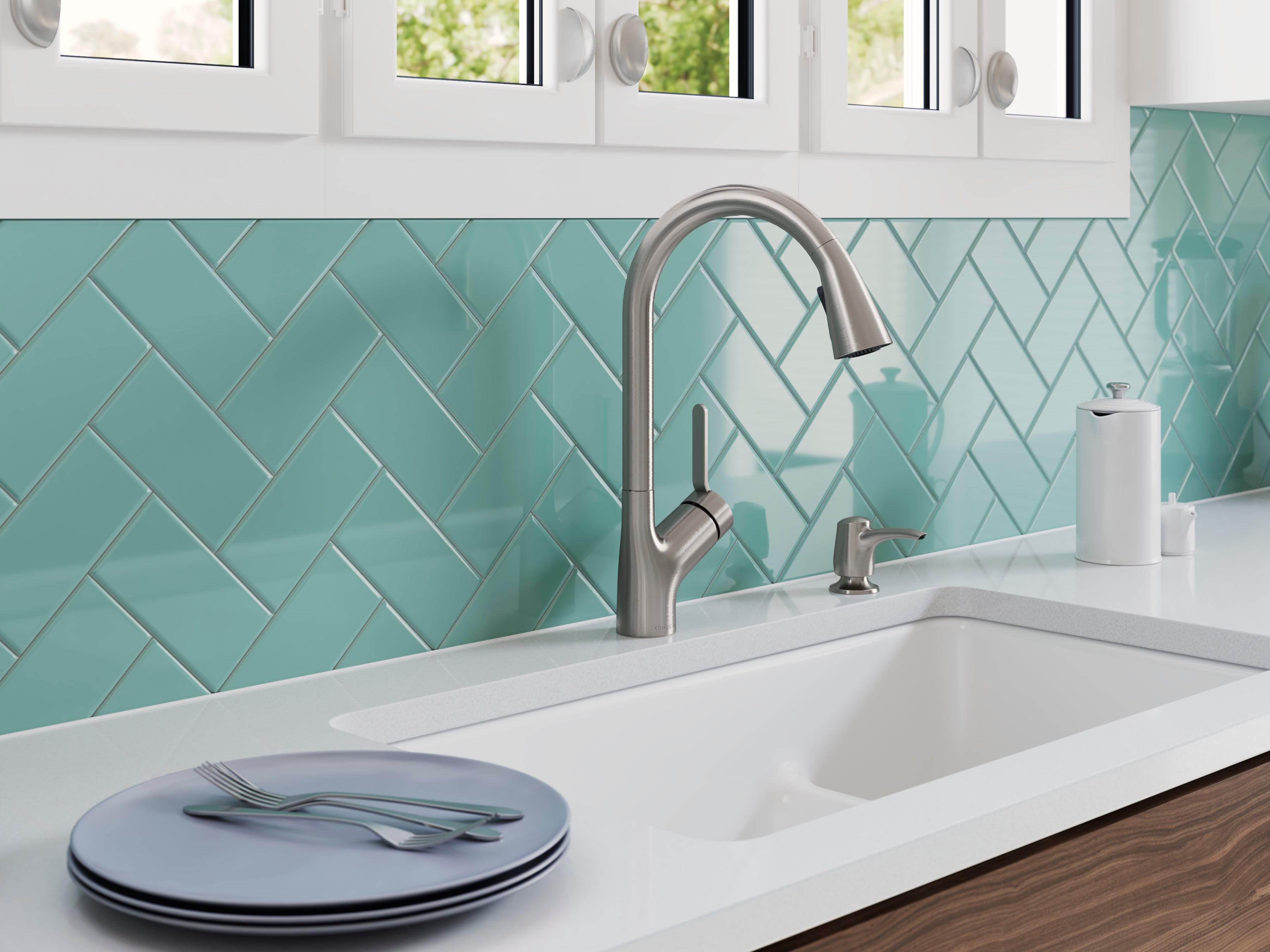There was a very specific, very scary period in March and April of this year when it seemed as though the coronavirus was hiding on every door handle, railing and faucet handle in America. As our understanding of the virus has progressed, it’s become more clear that the most common most of transmission is through exhaled aerosols. In other words, you’re way more likely to get COVID from hanging out in a crowded bar than touching the door handle to get into the bar.
Still, pandemic precautions have led to a boom in touchless products (especially faucets and soap and sanitizer dispensers) for public places. That much is not up for dispute. But as the pandemic enters its eighth month, has a boom in hands-free technology crossed over into the home, and will it outlast this annus horribilis?
According to Wisconsin-based appliance brand Kohler, the answer to both questions is a resounding yes. Last month, the company released a poll of 2,000 it had conducted, revealing that 85 percent of Americans were “more interested than ever” in touchless bathroom products. (For some reason, men ages 35 to 44 were the most interested.) The company also found that 91 percent of Americans ages 35 to 44 view touchless bathroom products as “essential components” of future upgrades in their current home.
The company’s own sales data paints the picture even more clearly. While sales on touchless faucets had been growing at a steady pace of 20 percent year over year since 2018, in 2020, sales jumped up a whopping 100 percent. Understandably, that has led to an internal flurry at the company to meet the booming demand.
“It was really clear early that this was something that was going to be really important really fast,” says Shawn Booth, the design manager of the bathroom fixtures department at Kohler. “We’ve been doing touchless products for years, but since the pandemic, the clean and hygiene team that I lead has become the most important team in the organization. It gets the most attention in reviews, we have more meetings, we have increased our staff and developed new methods for measuring [how effective these products are].”
Booth says the boom has been most clear for commercial applications, but that touchless in the home is on the rise as well. That increase, he says, is more nuanced than the demand for hands-free in public spaces.
“In residential spaces, people do want germ-free spaces, but there’s an element of ‘They’re my germs,’ as opposed to in public spaces, where it’s other people’s germs,” he says. “But when you combine [hygienic benefits] with reducing cleaning tasks and eliminating chores, that’s where it starts to build momentum.”
In other words, the general awareness of hygiene has gotten more Americans interested in touchless, but, in the home, hygiene alone won’t sell the product. “It’s got to be effortless, especially in the home,” says Booth. “If it's not effortless, people aren't going to use it, regardless of the hygiene benefits. It's got to work fast and easy and make your life easier.”
Interestingly, much of the infrared technology that underpins touchless products hasn’t changed all that much since their invention. The progress, says Booth, is mostly made in how you apply it. The goal is to avoid the “airline bathroom sink that won’t turn on no matter how many times you wave in front of the sensor” effect and deliver a product that works reliably and repeatedly—without getting accidentally triggered.
In recent years, as voice-activated smart home technology has become more common, Booth says Kohler’s strategy has been to design products that can be triggered in whichever way is most convenient—whether that’s waving a hand, turning on the faucet, or saying out loud: “Fill this pot with three cups of water.”
Those kinds of convenience-first innovations, says Booth, will give touchless fixtures legs beyond the current COVID-related boom. “It didn’t start with the pandemic, and it won’t end with the pandemic. With things like touchless, it always comes back to [the question]: Does it make my life easier?”
Homepage photo courtesy of Kohler





























